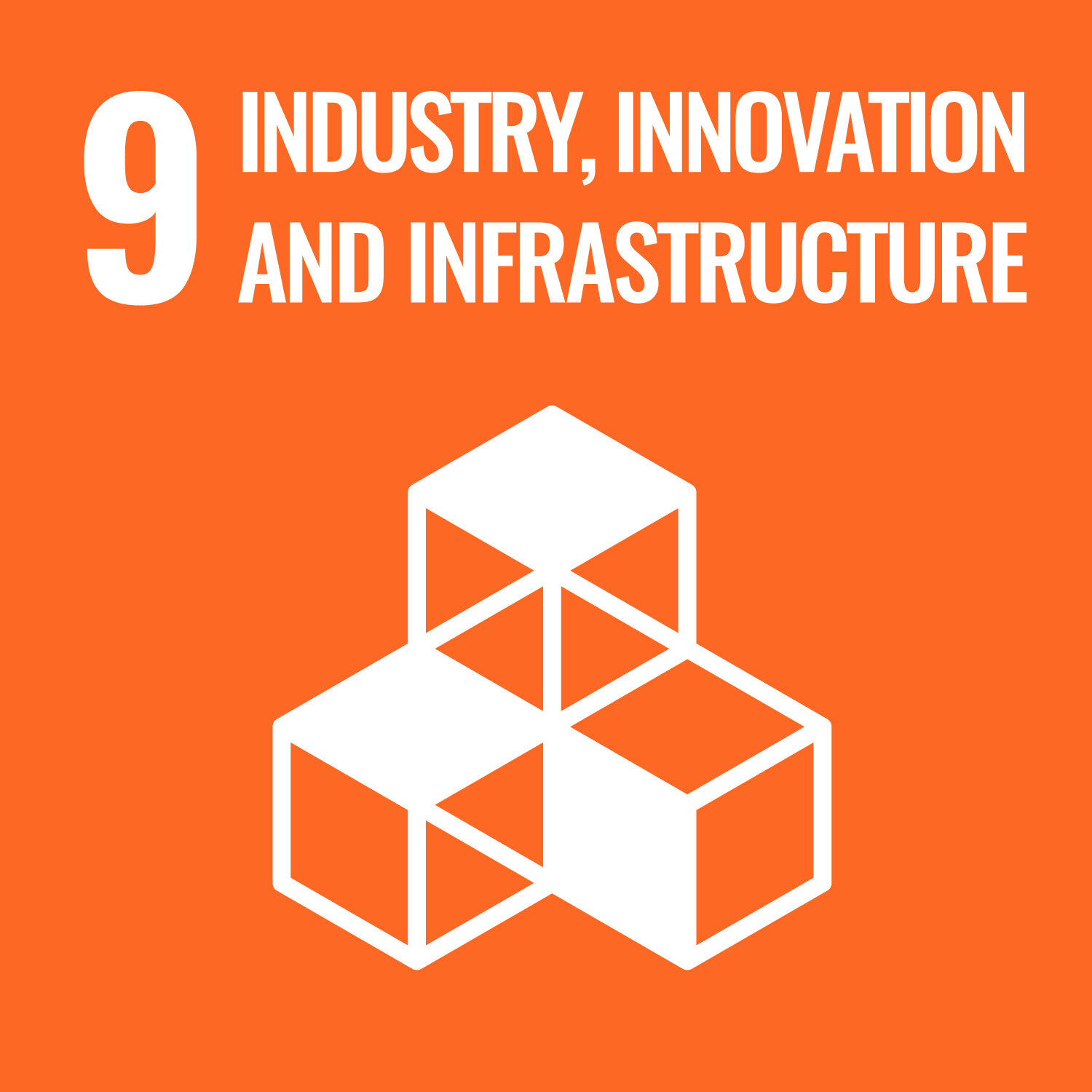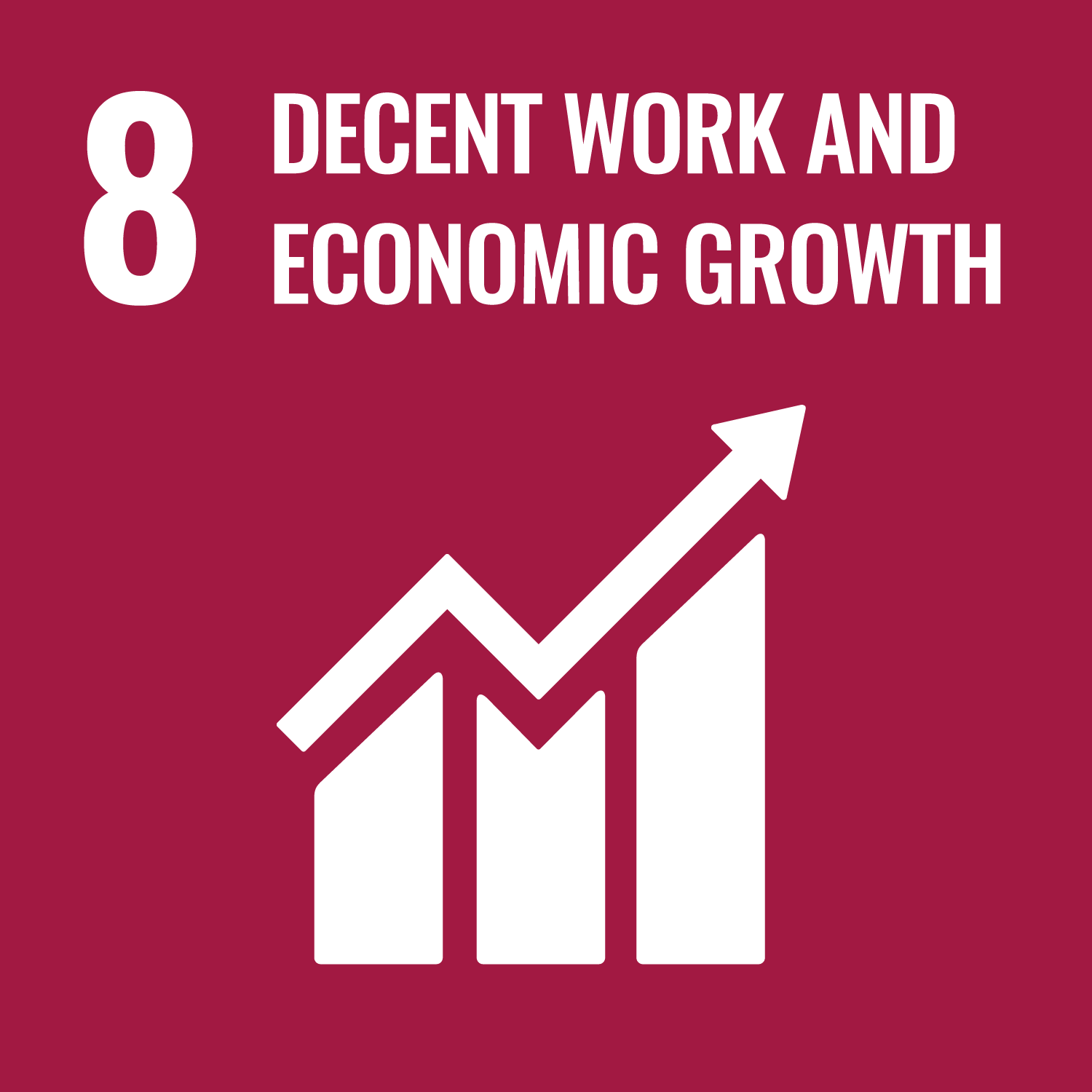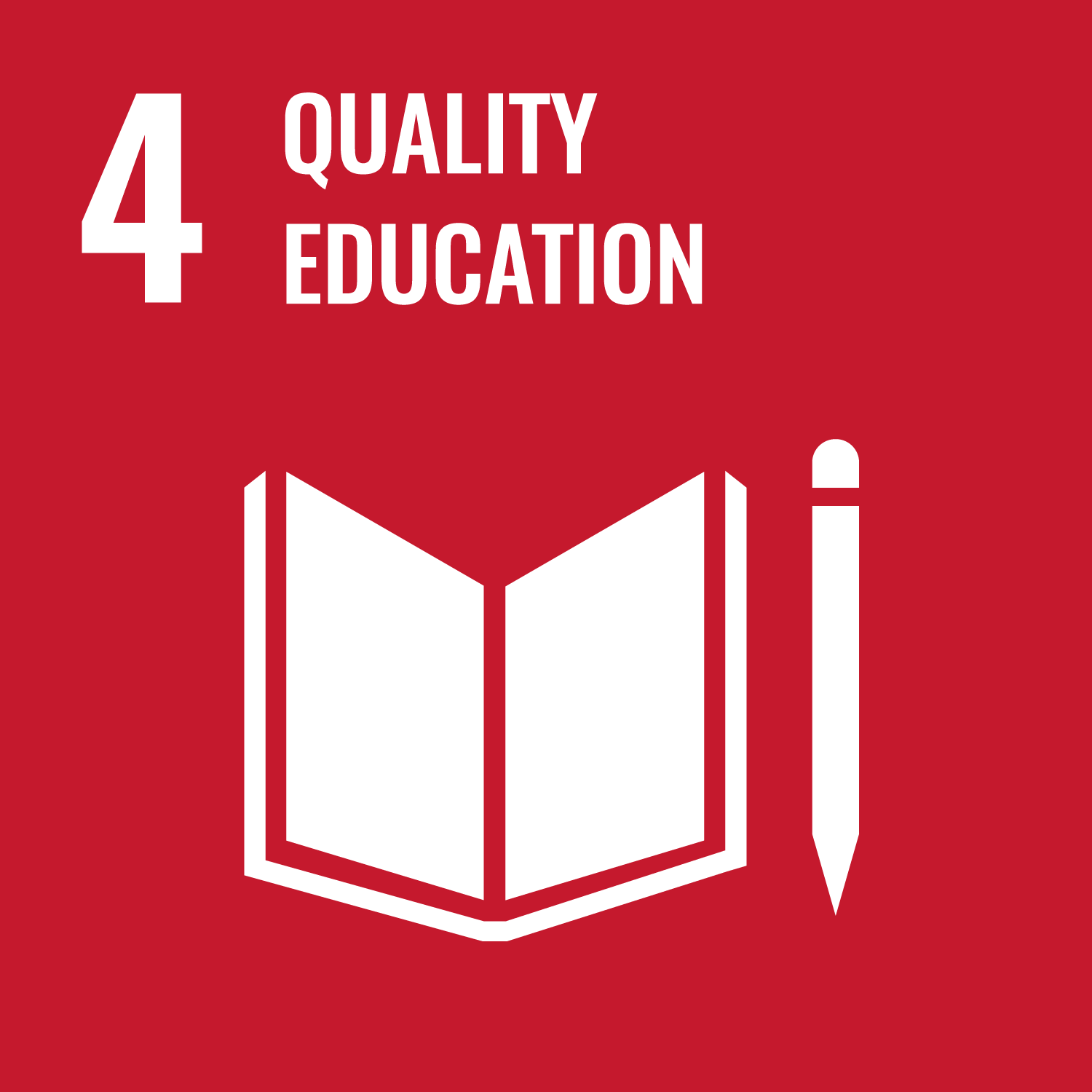ESG Data (As of May 21, 2025) [PDF 229 KB/2page]
| ID | Item | Related SDGs | KPI | Target | FY2022 | FY2023 | FY2024 | FY2025 |
|---|---|---|---|---|---|---|---|---|
| 1 | Improve energy efficiency and reduce energy usage |
 |
Greenhouse gas (GHG) emissions (Scope 1 and Scope 2) | Net zero (FY2051) |
97.3 tCO2 | 91.3 tCO2 | 98.7 tCO2 | 154.1 tCO2 |
| Greenhouse gas (GHG) emissions (Scope 1 and Scope 2) per unit of net sales | ー | 0.0120 (tCO2 / million yen) | 0.0101 (tCO2 / million yen) | 0.0097 (tCO2 / million yen) | 0.0139 (tCO2 / million yen) | |||
| Greenhouse gas (GHG) emissions (Scope 3) | Net zero (FY2051) |
ー | 1,002.8 tCO2 | 1,147.7 tCO2 | 1,471.8 tCO2 | |||
| Energy consumption (crude oil equivalent) | Reduction on an ongoing basis | 48.7 (kl / year) | 49.9 (kl / year) | 48.2 (kl / year) | 62.0 (kl / year) | |||
| Energy consumption (crude oil equivalent) per unit of net sales | ー | 0.0060 (kl / million yen) | 0.0054 (kl / million yen) | 0.0048 (kl / million yen) | 0.0056 (kl / million yen) | |||
| Reduction rate of copy paper used | Reduction on an ongoing basis | 14.5% reduction |
5.9% reduction |
6.2% reduction |
6.3% increase |
|||
| 2 | Contribute to carbon neutrality through business activities |
  |
Share of engineers placed in carbon neutrality projects among all engineers | 50.0% |
41.3% |
46.1% |
48.3% |
51.3% |
| ID | Item | Related SDGs | KPI | Target | FY2022 | FY2023 | FY2024 | FY2025 |
|---|---|---|---|---|---|---|---|---|
| 3 | Resolve social issues by creating jobs |
   |
Share of carbon neutrality recruitment targets for new graduates and career hires | 55.0% |
40.1% |
50.0% |
46.1% |
47.9% |
| 4 | Respect human rights |
  |
Number of serious human rights issues | None | None |
None |
None |
None |
| Number of discrimination incidents | None | None |
None |
None |
None |
|||
| Percentage of employees who have received harassment training | 100.0% | 100.0% |
100.0% |
100.0% |
100.0% |
|||
| Number of inquiries to harassment helpline | Appropriate response to inquiries | None |
None |
1 |
None |
|||
| 5 | Promote diversity and inclusion |
  | Share of female employees (engineers) | 10.0% or more | 3.7% |
4.1% |
3.7% |
4.1% |
| Share of female employees (administration) | Increase on an ongoing basis | 31.4% |
27.6% |
33.8% |
38.3% |
|||
| Number of female employees (engineers) | ー | 39 |
47 |
44 |
51 |
|||
| Number of female employees (administration) | ー | 32 |
35 |
45 |
57 |
|||
| Share of female employees (engineers) among new employees | Increase on an ongoing basis | 3.0% |
6.4% |
5.2% |
6.3% |
|||
| Share of female employees (administration) among new employees | Increase on an ongoing basis | 66.7% |
27.3% |
47.1% |
73.3% |
|||
| Appointment of female employees (engineers) to managerial positions | 3 or more | 2 |
2 |
2 |
2 |
|||
| Appointment of female employees to managerial positions | 10 or more | 6 |
10 |
10 |
13 |
|||
| Share of female employees in managerial positions | Increase on an ongoing basis | 3.7% |
3.4% |
3.1% |
5.1% |
|||
| Share of female directors | 30.0% or more (FY2031) |
0.0% |
0.0% |
0.0% |
0.0% |
|||
| Wage difference between male and female employees (overall) | Narrow the difference | Male 100.0%:Female 92.8% |
Male 100.0%:Female 94.5% |
Male 100.0%:Female 89.2% |
Male 100.0%:Female 89.5% |
|||
| Wage difference between male and female employees (engineers) | Narrow the difference | Male 100.0%:Female 99.2% |
Male 100.0%:Female 96.5% |
Male 100.0%:Female 95.8% |
Male 100.0%:Female 94.4% |
|||
| Wage difference between male and female employees (administration) | Narrow the difference | Male 100.0%:Female 71.0% |
Male 100.0%:Female 71.0% |
Male 100.0%:Female 71.9% |
Male 100.0%:Female 71.9% |
|||
| Average years of service of male employees (engineers) | Increase on an ongoing basis | 5.91 years |
6.15 years |
6.50 years |
6.30 years |
|||
| Average years of service of male employees (administration) | Increase on an ongoing basis | 10.69 years |
10.60 years |
10.95 years |
11.3 years |
|||
| Average years of service of female employees (engineers) | Increase on an ongoing basis | 3.41 years |
3.37 years |
4.03 years |
3.9 years |
|||
| Average years of service of female employees (administration) | Increase on an ongoing basis | 7.56 years |
8.34 years |
7.12 years |
6.3 years |
|||
| Average overtime hours (engineers) | ー | 16.9 hours |
17.9 hours |
18.1 hours |
17.7 hours |
|||
| Number of childcare leave days taken by male employees (average) | ー | 44.0 days |
79.5 days |
42.5 days |
48 days |
|||
| Usage rate of childcare leave (male employees) | 30.0% or more (FY2029) |
12.5% |
30.8% |
50.0% |
46.7% |
|||
| Usage rate of childcare leave (female employees)*1 | 80.0% or more (FY2029) |
100.0% |
100.0% |
66.7% |
200% |
|||
| Usage rate of nursing care leave (male and female employees) | 15.0% or more (FY2029) |
1.2% |
7.4% |
13.7% |
8.4% |
|||
| Share of non-Japanese talents | Recruitment on an ongoing basis | 1.4% |
1.0% |
1.4% |
1.9% |
|||
| Share of elderly employees (60 years of age and older) | Recruitment on an ongoing basis | 1.4% |
1.4% |
1.3% |
1.3% |
|||
| Employment rate of employees with disabilities | 2.30% or more (legally required employment rate) | 2.40% (as of June 1, 2021) |
2.42% (as of June 1, 2022) |
2.67% (as of June 1, 2023) |
2.43% (as of June 1, 2024) |
|||
| Percentage of the Company’s former employees who used job change assistance program | ー | 0.8% |
1.7% |
2.3% |
1.9% |
|||
| Share of regular employees hired mid-career | ー | 2.0% |
4.8% |
7.7% |
4.0% |
|||
| Number of employees | ー | 1,180 |
1,276 |
1,321 |
1,397 |
|||
| Number of temporary employees (average) | ー | 10 |
16 |
24 |
30 |
|||
| 6 | Develop and secure promising talents |
  |
||||||
| Average hours of annual training per employee (engineer) | Same level each year | 163.9 hours |
81.2 hours |
97.0 hours |
95.7 hours |
|||
| Average cost of annual training per employee (engineer) | Same level each year | 63,000 yen |
62,000 yen |
54,000 yen |
59,000 yen |
|||
| Percentage of employees who have received talent development training | Same level each year | 89.1% |
84.8% |
87.4% |
85.0% |
|||
| Turnover rate (engineers) *Excluding retirement and turnover via the Company’s assistance program to change jobs | Under 10.0% | 10.3% |
7.7% |
8.3% |
9.7% |
|||
| Turnover rate (engineers) | ー | 11.3% |
9.6% |
10.9% |
11.7% |
|||
| Turnover rate for new graduates within three years | ー | 29.5% |
37.6% |
46.1% |
38.6% |
|||
| Periodic health checkup, consultation rate | 100.0% | 100.0% |
100.0% |
100.0% |
100.0% |
|||
| Stress check, consultation rate | 100.0% | 82.8% |
78.9% |
82.6% |
84.0% |
|||
| Annual paid leave, acquisition rate (overall) | 80.0% or more | 76.5% |
85.0% |
84.9% |
85.7% |
|||
| Annual paid leave, acquisition rate (engineers) | 80.0% or more | 76.5% |
85.2% |
85.7% |
87.1% |
|||
| Improving health literacy (through training), attendance rate | 100.0% | 100.0% |
100.0% |
100.0% |
100.0% |
|||
| BMI below 25, ratio | 75.0% | ー | 69.9% |
71.1% |
68.8% |
|||
| Presenteeism (Productivity at work decreases due to health issues)*2 | 100% | ー | 92.3% |
92.1% |
92.4% |
|||
| Absenteeism (Absent from work due to health issues) | 0.00% | 0.68% |
1.17% |
0.98% |
0.93% |
|||
| Average age | ー | 30.2 years old |
30.3 years old |
30.4 years old |
30.6 years old |
|||
| Average years of service | ー | 6.3 years |
6.5 years |
6.6 years |
6.7 years |
|||
| Number of occupational accidents | None | 3 |
10 |
6 |
9 |
|||
| Occupational accident-related fatality rate | 0.0% | 0.0% |
0.0% |
0.0% |
0.0% |
|||
| Downtime due to occupational accidents | 0.00 hours | 76.00 hours |
34.17 hours |
52.50 hours |
0.00 hours |
|||
| Percentage that received health and safety training, attendance rate | 100.0% | 100.0% |
100.0% |
100.0% |
100.0% |
|||
| Percentage of employees who have received training on diseases unique to women | 100.0% | ー | ー | 87.8% |
45.2% |
|||
| Work engagement score*3 | 2.7 | ー | ー | 2.6 |
2.6 |
|||
| Payment related to regional and social contribution | ー | 2,000,000 yen |
2,000,000 yen |
2,000,000 yen |
3,000,000 yen |
| ID | Item | Related SDGs | KPI | Target | FY2022 | FY2023 | FY2024 | FY2025 | |
|---|---|---|---|---|---|---|---|---|---|
| 7 | Strengthen corporate governance |
−
|
Appointment ratio of Independent Directors | One-third or more | 37.5% |
37.5% |
37.5% |
37.5% |
|
| Number of Outside Directors | ー | 3 |
3 |
3 |
3 |
||||
| Ratio of Outside Directors in the Nomination and Remuneration Committee | Majority | 75.0% |
75.0% |
75.0% |
75.0% |
||||
| Remuneration of Outside Directors | ー | 22,000,000 yen |
24,000,000 yen |
25,000,000 yen |
25,000,000 yen |
||||
| Number of Directors | ー | 8 |
8 |
8 |
8 |
||||
| Board of Directors | Number of meetings held | ー | 30 times |
31 times |
30 times |
30 times |
|||
| Attendance rate | ー | 99.2% |
98.8% |
99.6% |
100.0% |
||||
| Attendance rate of Independent Directors | ー | 97.8% |
96.8% |
100.0% |
100.0% |
||||
| Compliance and Risk Management Meeting | Number of meetings held | ー | 12 times |
12 times |
12 times |
12 times |
|||
| Attendance rate | ー | 96.9% |
99.0% |
100.0% |
100.0% |
||||
| Attendance rate of Independent Directors | ー | 91.7% |
97.3% |
100.0% |
100.0% |
||||
| Sustainability Committee | Number of meetings held | ー | 4 times |
4 times |
4 times |
4 times |
|||
| Attendance rate | ー | 93.8% |
100.0% |
100.0% |
100.0% |
||||
| Attendance rate of Independent Directors | ー | 83.4% |
100.0% |
100.0% |
100.0% |
||||
| Audit and Supervisory Committee | Number of meetings held | ー | 25 times |
26 times |
26 times |
26 times |
|||
| Attendance rate | ー | 100.0% |
100.0% |
100.0% |
100.0% |
||||
| Attendance rate of Independent Directors | ー | 100.0% |
100.0% |
100.0% |
100.0% |
||||
| Nomination and Remuneration Committee | Number of meetings held | ー | ー | 4 times |
4 times |
6 times |
|||
| Attendance rate | ー | ー | 100.0% |
100.0% |
100.0% |
||||
| Attendance rate of Independent Directors | ー | ー | 100.0% |
100.0% |
100.0% |
||||
| Evaluation of the effectiveness of the Board of Directors | Once | Once | Once | Once | Once | ||||
| 8 | Promote compliance management |
 |
Percentage of employees who have received compliance training | 100.0% | 100.0% |
100.0% |
100.0% |
100.0% |
|
| Percentage of employees who have received information security training | 100.0% | 100.0% |
100.0% |
100.0% |
100.0% |
||||
| Number of major compliance violations | None | None |
None |
None |
None |
||||
| Number of major information security incidents | None | None |
None |
None |
None |
||||
| Number of inquiries to whistleblowing helpline | Appropriate response to inquiries | None |
None |
None |
None |
||||
| Number of major dispositions related to corruption | None | None |
None |
None |
None |
||||
| Number of instances where employees were fined for corruption, etc. | None | None |
None |
None |
None |
||||
*1 Usage rate of childcare leave (female employees): FY2025 200.0% = 2 employees who took childcare leave ÷ 1 employee who gave birth
*2 Measurement method: Wfun (a survey developed by University of Occupational and Environmental Health, Japan to measure the extent of work-related functional impairment caused by health issues)
*3 Measurement method: New Brief Job Stress Questionnaire (work engagement is a state where employees feel vigor, dedication, and absorption toward their work). Evaluated on a scale of 0 to 4. The national average is 2.5.
 Cookie Settings
Cookie Settings
